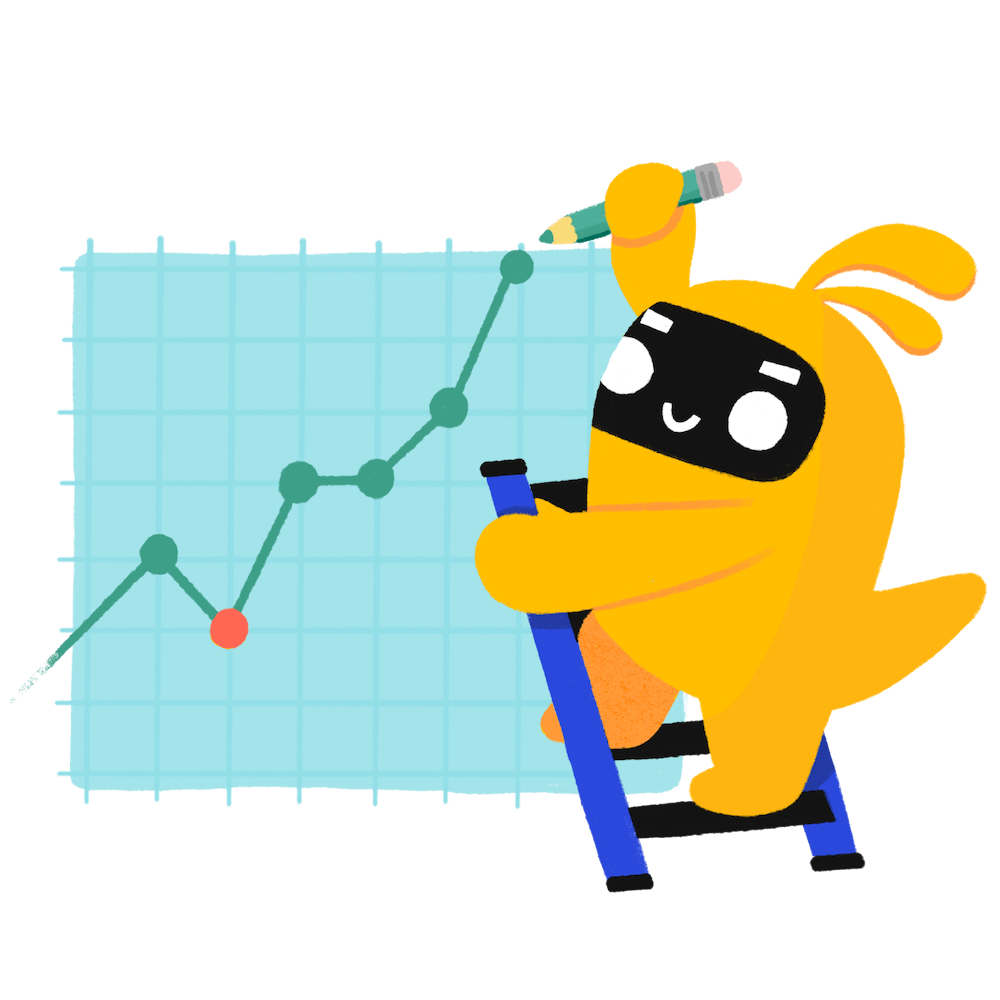3 customisable OKR examples for Solution Design Team
What are Solution Design Team OKRs?
The Objective and Key Results (OKR) framework is a simple goal-setting methodology that was introduced at Intel by Andy Grove in the 70s. It became popular after John Doerr introduced it to Google in the 90s, and it's now used by teams of all sizes to set and track ambitious goals at scale.
Creating impactful OKRs can be a daunting task, especially for newcomers. Shifting your focus from projects to outcomes is key to successful planning.
We have curated a selection of OKR examples specifically for Solution Design Team to assist you. Feel free to explore the templates below for inspiration in setting your own goals.
If you want to learn more about the framework, you can read our OKR guide online.
Building your own Solution Design Team OKRs with AI
While we have some examples available, it's likely that you'll have specific scenarios that aren't covered here. You can use our free AI generator below or our more complete goal-setting system to generate your own OKRs.
Feel free to explore our tools:
- Use our free OKR generator
- Use Tability, a complete platform to set and track OKRs and initiatives, including a GPT-4 powered goal generator
Our customisable Solution Design Team OKRs examples
You'll find below a list of Objectives and Key Results templates for Solution Design Team. We also included strategic projects for each template to make it easier to understand the difference between key results and projects.
Hope you'll find this helpful!
1. OKRs to enhance application design by solution architect review
Enhance application design by solution architect review
Conduct in-depth analysis of current application design flaws
Analyze identified flaws and their impacts on user experience
Identify potential areas of improvement in the application design
Develop a plan to address and fix noted design flaws
Collaborate with development team to propose and implement design improvements
Draft proposed design improvements for team review
Oversee implementation of agreed-upon design changes
Organize meeting with development team to discuss design enhancements
Track and evaluate impact of design changes on overall system performance
Analyze and document performance variations tied to design changes
Monitor system performance before and after design changes implementation
Run system testing for evaluating design modifications' effectiveness
2. OKRs to design a comprehensive solution architecture for in-house projects
Design a comprehensive solution architecture for in-house projects
Present and gain approval for solution architecture from key stakeholders, including management and IT teams
Prepare comprehensive presentation detailing solution architecture
Schedule meeting with stakeholders and IT team
Present solution architecture, seeking approval
Develop detailed solution architecture that aligns with business objectives and enables scalability
Design a detailed solution architecture blueprint
Ensure alignment between architecture and business goals
Identify business objectives and scalability requirements
Conduct thorough analysis of current systems and requirements to identify gaps and needs
Review current systems and requirements for accuracy and efficiency
Identify gaps within existing systems and requirements
Determine future needs based on identified gaps
3. OKRs to elevate the quality and impact of design solutions
Elevate the quality and impact of design solutions
Secure positive feedback on design improvements from 90% of project stakeholders
Create a stakeholder survey to collect feedback on improvements
Implement design improvements based on stakeholder feedback
Discuss feedback results with stakeholders, making necessary adjustments
Complete and apply comprehensive brand guidelines to at least 3 projects
Develop comprehensive brand guidelines based on company values and aesthetics
Incorporate and apply brand guidelines to each project
Assign the guidelines to three specific projects
Achieve a 15% improvement in user experience scores for all projects
Train staff in advanced UX/UI design principles
Implement user feedback for continuous product improvement
Regularly test and optimize website speed and responsiveness
Solution Design Team OKR best practices to boost success
Generally speaking, your objectives should be ambitious yet achievable, and your key results should be measurable and time-bound (using the SMART framework can be helpful). It is also recommended to list strategic initiatives under your key results, as it'll help you avoid the common mistake of listing projects in your KRs.
Here are a couple of best practices extracted from our OKR implementation guide 👇
Tip #1: Limit the number of key results
Focus can only be achieve by limiting the number of competing priorities. It is crucial that you take the time to identify where you need to move the needle, and avoid adding business-as-usual activities to your OKRs.
We recommend having 3-4 objectives, and 3-4 key results per objective. A platform like Tability can run audits on your data to help you identify the plans that have too many goals.
 Tability's audit dashboard will highlight opportunities to improve OKRs
Tability's audit dashboard will highlight opportunities to improve OKRsTip #2: Commit to weekly OKR check-ins
Having good goals is only half the effort. You'll get significant more value from your OKRs if you commit to a weekly check-in process.
Being able to see trends for your key results will also keep yourself honest.
 Tability's check-ins will save you hours and increase transparency
Tability's check-ins will save you hours and increase transparencyTip #3: No more than 2 yellow statuses in a row
Yes, this is another tip for goal-tracking instead of goal-setting (but you'll get plenty of OKR examples above). But, once you have your goals defined, it will be your ability to keep the right sense of urgency that will make the difference.
As a rule of thumb, it's best to avoid having more than 2 yellow/at risk statuses in a row.
Make a call on the 3rd update. You should be either back on track, or off track. This sounds harsh but it's the best way to signal risks early enough to fix things.
How to turn your Solution Design Team OKRs in a strategy map
OKRs without regular progress updates are just KPIs. You'll need to update progress on your OKRs every week to get the full benefits from the framework. Reviewing progress periodically has several advantages:
- It brings the goals back to the top of the mind
- It will highlight poorly set OKRs
- It will surface execution risks
- It improves transparency and accountability
Spreadsheets are enough to get started. Then, once you need to scale you can use a proper OKR platform to make things easier.
 Tability's Strategy Map makes it easy to see all your org's OKRs
Tability's Strategy Map makes it easy to see all your org's OKRsIf you're not yet set on a tool, you can check out the 5 best OKR tracking templates guide to find the best way to monitor progress during the quarter.
More Solution Design Team OKR templates
We have more templates to help you draft your team goals and OKRs.
OKRs to increase conversion rate of free subscribers to paid subscribers
OKRs to expand Sales to a new region
OKRs to roll out employee benefits
OKRs to enhance security posture and governance as CISO Manager
OKRs to enhance product and component Quality, Security, & Performance
OKRs to improve CX across the agency
OKRs resources
Here are a list of resources to help you adopt the Objectives and Key Results framework.
- To learn: What is the meaning of OKRs
- Blog posts: ODT Blog
- Success metrics: KPIs examples
Create more examples in our app
You can use Tability to create OKRs with AI – and keep yourself accountable 👀
Tability is a unique goal-tracking platform built to save hours at work and help teams stay on top of their goals.
 1 Create your workspace
1 Create your workspace 2 Build plans in seconds with AI
2 Build plans in seconds with AI 3Track your progress
3Track your progress